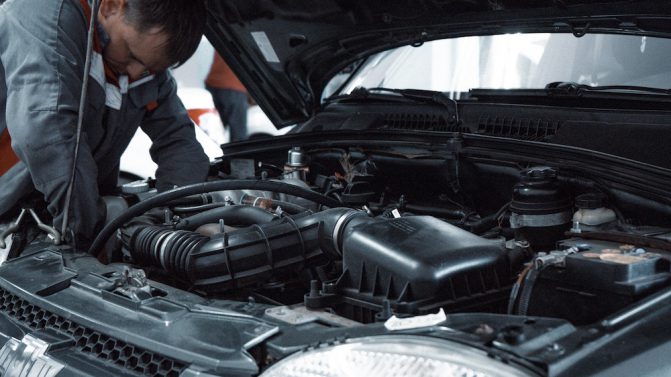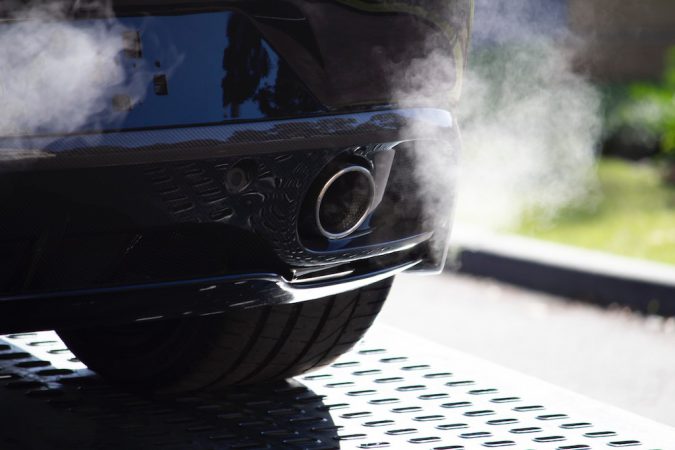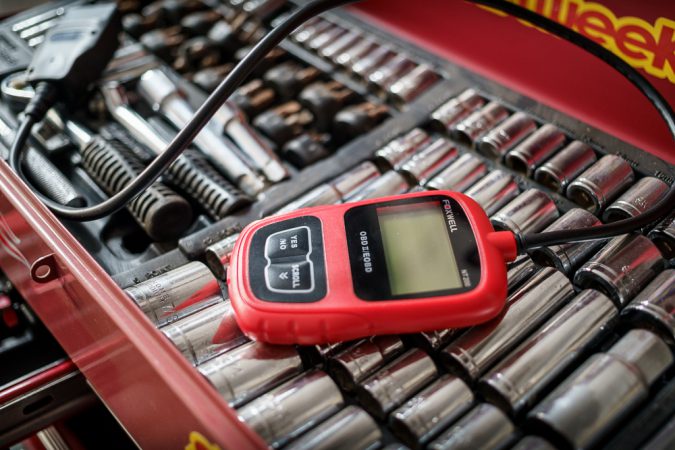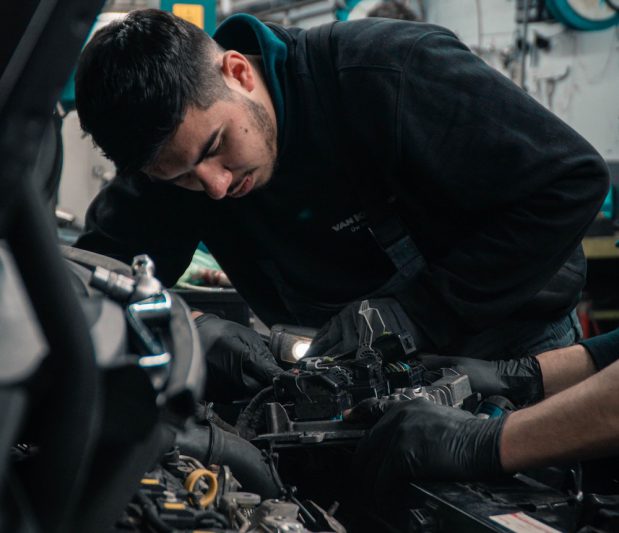In an era with greater consciousness towards climate change, emissions have become a thorny issue. Those mini explosions in your engine aren’t good for the environment, but there are ways in which we can make it better. The advances in technology have made engines more efficient, cleaner, and emit fewer tailpipe emissions. Hence, why we need to worry about an EGR valve replacement cost.
An EGR valve is one of many other integral components in modern-day vehicles that helps to control those dirty particulates. In doing so, the EGR cleans away any harmful gases before they leave your car’s tailpipes. Plus, its natural side-effects also mean that the engine runs more efficiently, which results in lower fuel consumption. Unfortunately, this won’t be possible if the EGR valve breaks.
So, just what is the EGR valve, and why should it matter? Moreover, how can it break, and what can we do to fix this? We’ll take a look at these burning questions and more, including estimates for an EGR valve replacement cost. So, keep your wallet handy…
- What Is An EGR Valve?
- Types Of EGR Valves
- Why Replace Them?
- Symptoms
- Costs
- DIY Replacement
- Cleaning
- Final Thoughts
What Do You Need To Know About An EGR Valve?
Before we get into discussing what an EGR valve replacement cost is, it’s worth taking some time to learn more about what it is. So, what is this EGR valve, anyway? Its full unabbreviated name is the “exhaust gas recirculation” valve, and its primary function is as the name suggests. As a part of the engine management system, the EGR recirculates excessive emissions back to the engine.
In other words, the EGR recirculates exhaust gases created as part of the combustion process. But why would you want this, you might ask? There are a few good reasons for this. Firstly, and by sucking away excess pollution away from the tailpipe, the EGR brings a reduction in emissions. Additionally, circulating those exhaust fumes back to the intake improves engine efficiency by cutting waste.
This means you’ll notice lower fuel consumption in the long run. You have to remember that engines run hot… Pretty hot, with temperatures soaring to at least 1,370°C in there. The EGR only takes in a tiny dose of these exhaust fumes at a time. The gases include toxic fumes such as nitrogen oxide, as well as numerous others. When they re-enter the intakes, the chemical make-up starts changing.
These once toxic gases infuse with the oxygen, diluting the mixture of the air. When they ignite, this now-diluted mixture burns slower and can lower the temperatures inside the combustion chamber by nearly 150°C. Aside from that, less nitrogen oxide (NOx) is emitted from your tailpipes. Several other benefits include providing better knock tolerance and helping to reduce diesel knock at idle.
How Does It Work, And What Types Of EGR Valves Are There?
The EGR valves have two different settings – on, or off. When the engine is just starting up, the EGR valve stays closed. It then gradually opens as you idle along and build up speed. It can be up to 90% open just on idle. The valves open fully when, for instance, you need more power and torque while accelerating. The EGR valve then closes back whenever the engine needs a lot of oxygen.
In the olden days, most EGR valves were vacuum-operated. These days, however, EGR valves could be actuated electronically. Primarily, there are five different types of EGR valves:
- High-Pressure Diesel EGR Valves – It helps to recirculate the typically high-soot diesel exhaust fumes back through the particulate filter, and then to the intake manifolds. This EGR valve is useful to aid in clearing out sludge, which is formed when soot is combined with oil vapors.
- Low-Pressure Diesel EGR Valves – It diverts the high-soot exhaust gases after it’s passed through the diesel particulate filter. The pressure is much lower, but it’s also almost clear of any soot.
- Gasoline EGR Valves – This works the same way with high-pressure diesel EGR valves. The cylinder depression creates a vacuum that helps to draw exhaust fumes into the valves.
- Vacuum-Operated EGR Valves – These use a vacuum solenoid to adjust the vacuum pressure to the diaphragm. Subsequently, this opens and closes the valves, which control the flow of gases. Some vacuum-operated EGR valves may include a feedback sensor to inform the ECU on the positioning of the valves.
- Digital EGR Valves – There’s now a solenoid and motor that works alongside a feedback sensor. The latter is connected to the ECU. The valves receive opening and closing signals from the ECU to thus regulate the flow of exhaust fumes.
What Causes You To Need An EGR Valve Replacement Cost?
Seeing the importance of its role, why is it that you have to worry about an EGR valve replacement cost? Well, it’s worth reminding ourselves of how much strain the EGR valves have to go through in their daily routine. It’s subjected to incredibly pressurized, toxic, and (intensely) hot exhaust fumes just in ordinary day-to-day driving. Therefore, the EGR valves go through a lot of wear and tear.
Usually, the most common cause of failure prompting you towards an EGR valve replacement cost is carbon build-up. These particulates that are left behind from the exhaust gases can leave a residue in the EGR valves and intakes. As time passes, it’ll start clogging up tubes, channels, passageways, and finally, it’ll block the EGR valve’s plunger mechanism. This is what controls the valves.
So, it could be left stuck fully open or close, rendering it inoperable. Alternatively, the EGR valves fail due to a leak or rupture in the vacuum diaphragm. This can happen owing to high pressures and a lack of maintenance. Speaking of, here’s a tip on how to care for your car’s EGR valves:
- Consider getting a carbon cleaning service done on your car every 50,000 or so miles. It’s not a must, but it can help immensely in cleaning out any carbon build-up or sludge. Removing these from the system – which can start accumulating quite easily – will prevent the EGR valves from failing. Also, do consider your oil changes. This reduces the possibility of sludge accumulation in the engine.
What Are The Symptoms That You Need To Consider An EGR Valve Replacement Cost?
Interestingly, EGR valves should be one of the most long-lasting and durable components in your engine. There’s no set mileage for it, but typically, an EGR valve is made to last at least 10 or more years. Therefore, you shouldn’t have to worry too much about an EGR valve replacement cost. Yet, you’re here, so clearly there’s a problem somewhere that’s caused it to fail.
If you get that aforementioned air induction (carbon cleaning) service done, it should be good for a long, long time. If not, here are some symptoms that you should look out for to know that your EGR valves are on their way out. Should this be the case, then an EGR valve replacement cost may be on the cards. However, know that EGR valve failure can be confused with other faults.
These symptoms down below are shared with other issues, such as faulty spark plugs, leaky or bad cooling system, or a clogged air filter. So, it’s worthwhile isolating those problems first, before you can ascertain for sure that the EGR valves are at fault.
1. Check Engine Light Appears
The first way to tell that something’s amiss is when your check engine light appears. A failed EGR valve should trigger one or more of the emissions sensors. Unfortunately, a check engine light alone can’t tell you what the underlying problem or cause is.
Remember that the CEL (check engine light) also illuminates a host of other issues. Just to make sure that it’s the EGR valve, grab an OBDII diagnostics tool. Then, you can analyze your car’s brain to see precisely what’s prompted the CEL to appear.
What you’ll see are diagnostic trouble codes (DTCs), which can pinpoint the root cause at hand. For a failed EGR valve, look out for these error codes to determine if it’s the issue:
- P0400 – EGR Flow Malfunction
- P0401 – EGR Insufficient Flow Detected
- P0402 – EGR Excessive Flow Detected
- P0403 – EGR Circuit Malfunction
- P0404 – EGR Circuit Range/Performance
- P0405 – EGR Sensor A Circuit Low
- P0406 – EGR Sensor A Circuit High
- P0407 – EGR Sensor B Circuit Low
- P0408 – EGR Sensor B Circuit High
- P1403 – EGR Solenoid Low
- P1404 – EGR System Closed Valve Pintle Error
- P1405 – EGR Solenoid High
- P1406 – EGR System Pintle Position Error
2. Rough Idling
Another clear tell-tale sign that an EGR valve replacement cost might be due is a rough idle. Often, this shaky idling occurs because of an incorrect air-to-fuel ratio during the combustion. Once again, a faulty EGR valve can cause this to happen.
You can notice that the idling is especially rough when you’re idling, more so compared to when it’s moving. The lower your engine load is, the harder it will be to keep it running as the EGR valves are choking it of any oxygen.
3. Poor Performance And Slow Acceleration
We can relate to that air-to-fuel ratio. In layman’s terms, this means how much air is needed with a set volume of fuel for it to combust. For most cars, this (stoichiometric) ratio is 14.7:1. Or, for every 1lb of fuel that needs to be burnt, the engine needs 14.7lb of air.
Alas, your car’s ECU – or its computer brain – needs to adjust the air-to-fuel ratio on the fly based on input from the EGR valves. This is to maintain the cleanest, most efficient, and potent ignition that it can muster. If the EGR valves break, the ECU will compensate incorrectly.
For example, let’s say the ECU accidentally pumps in too much exhaust gas back to the combustion chamber. Usually, this is due to the EGR valves being stuck fully open. In this scenario, the air-to-fuel ratio is thrown out of whack. Therefore, the performance of your car will suffer greatly.
4. Car Stalling While Driving
A familiar pattern here, as faulty EGR valves interrupt the combustion process of your engine. At the very worst, your engine may stall as it can’t combust properly. Generally, this will happen more as you’re idling rather than while you’re driving.
As with rough idling, the engine has to work harder to get that oxygen when it’s idling, or traveling at very low speeds. We can consider stalling as the worst possible symptom of a faulty EGR valve. If this happens to you, then don’t postpone an immediate EGR valve replacement cost.
5. Poor Fuel Economy
One side-effect of having your engine run with a shoddy EGR valve is that it can’t operate as well or as efficiently as it did before. As a result, you’ll see an uptick in fuel consumption. This is the case as your engine needs to overcompensate for the EGR’s failings.
To proceed with a successful ignition in this situation, the engine will have to pump in more fuel. Or, it could leave a lot of fuel unburnt in the process. Thus, it’ll keep drinking a lot more fuel than it used to. Although, this symptom could be associated with a wide-ranging set of issues elsewhere.
6. Failed An Emissions Test
The EGR is a part of your car’s emissions system. Hence, and if you’re putting your car through an emissions test, a faulty EGR valve could cause it to fail. In fact, any single component of your car’s emissions system, when it goes awry during the emissions test, can prompt it to fail.
Unfortunately, this means that troubleshooting the exact cause can be problematic. It’s not always a given that the EGR valves are the true source of the emissions test failure. Moreover, not every part of your car requires emissions testing, so diagnosing it this way can prove difficult.
7. Gasoline Smell From The Exhaust
If you’re standing by the tailpipes of your car, it can be normal to smell that exhaust running. But, if you happen to pick up a strong scent of gasoline from inside the cabin, this could point us towards an EGR valve failure.
This odor stems from high concentrations of hydrocarbons being released into the exhausts, and out of the tailpipes. It’s a clear sign that the EGR valves are stuck close. This means that it can’t enable the recirculation process to happen.
How Much Does An EGR Valve Replacement Cost You?
Now, we come to the elephant in the room – how much does an EGR valve replacement cost? Is it as expensive as we alluded to earlier? As we mentioned, it’s quite rare for an EGR valve to fail. Plus, if it does fail, you won’t likely need to spend on an EGR valve replacement cost more than once in the lifetime of your vehicle. Still, that ultimately can’t dull the expense needed.
A typical EGR valve replacement cost will average in at around $140 to $550. This accounts for both parts and labor. For most of you, you can expect an EGR valve replacement cost somewhere in the neighborhood of $250 to $400. That said, it varies largely depending on the make and model of your vehicle. The labor rates, surprisingly, aren’t too expensive, as it’s not hard to replace.
The EGR valves are easily accessible, often found by the intake manifolds. Therefore, mechanics are going to have an easy time getting to them and swapping the valves out. The issue here is that the parts themselves take up the lion’s share of the EGR valve replacement cost. You could find an EGR valve for anywhere between $70 and $490. Aftermarket parts will of course be cheaper than OEM.
To give you a better idea of how much a potential EGR valve replacement cost will be for your car, you can refer to our samples below. You can see that overall, and looking at the bigger picture of automotive repairs, an EGR valve replacement cost is (comparatively speaking) inexpensive. This is all for a part that’ll possibly last for another 10 years.
EGR Valve Replacement Cost Samples
- Chevrolet Silverado – Parts: $180-$300/ Labor: $40-$50/ Total: $220-$350
- Cadillac Escalade – Parts: $170-$230/ Labor: $30-$40/ Total: $200-$270
- Ford Focus – Parts: $70-$150/ Labor: $80-$110/ Total: $150-$260
- Ford Fusion – Parts: $70-$180/ Labor: $80-$110/ Total: $150-$290
- Honda CR-V – Parts: $120-$360/ Labor: $40-$50/ Total: $160-$410
- Toyota Corolla – Parts: $120-$480/ Labor: $70-$90/ Total: $190-$570
- Nissan Versa – Parts: $170-$420/ Labor: $20-$30/ Total: $190-$450
- Nissan Altima – Parts: $220-$420/ Labor: $90-$120/ Total: $310-$540
- Honda Civic – Parts: $120-$170/ Labor: $20-$30/ Total: $140-$200
- Honda Accord – Parts: $120-$150/ Labor: $40-$50/ Total: $160-$200
Can You Skip On An EGR Valve Replacement Cost By Doing It Yourself?
In short, yes. An EGR replacement is one of those repairs that could be done fairly easily DIY-style. Although seeing how relatively minimal the labor charges are for a professional job, one wonders if it’s better to do it that way, instead. But hey, each one to their own. If you’d like to attempt this replacement job at home, it won’t take you a lot of time, nor would it necessitate complex tools.
Moreover, and as we’ve detailed earlier, the EGR is pretty easy to access compared to most other engine or emissions-related components. Here’s a more detailed guide on how to replace your EGR valves, should an EGR valve replacement cost not be preferable:
A (Simplified) Step-By-Step Guide On How To Replace Your EGR Valves
- First, you’ll need to find it. Again, it should be located near or is attached to, the intake manifolds. In some cars, you may have to remove an engine cover to get to it.
- Now, loosen the electrical cables on the valve. Before you do this, just make sure you detach the battery beforehand, just to be safe.
- While the electrical connections are removed, you should inspect these. See if it’s a frayed or short-circuited wire is what’s causing it to fail, instead.
- Remove the fastening screws holding the EGR valve in place, and take a peek inside it. Inspect for any damage, corrosion, or carbon build-up.
- When the EGR valve is removed, you should clean the valve’s mounting plate thoroughly. Then, you ought to replace and fit some new seals and gaskets around it. If there’s any loose carbon or soot in the EGR supply port, clean this one out, too.
- Once you’re ready to fit the new EGR valve in, line it up against the bolts and gaskets. Next, gently reattach it.
- Tighten it down based on the recommended torque settings. We’d highly suggest that you refer to a service or repair manual that’s specific to your car. That should expedite the process quite nicely.
- Now, and once the EGR valve is fully seated in place, reconnect the vacuum lines and electrical connections. Double-check to see if they’re properly plugged in.
- With an OBD diagnostics tool in hand, you can now reset the check engine light. Finally, you can conduct a brief road test to see if it’s running properly.
- Mind you, most EGR valves these days require a detailed reset under manufacturer adaptations. This should give the ECU a chance to relearn the open and close positions on the valves. Otherwise, you could break the valves.
Can You Avoid An EGR Valve Replacement Cost By Cleaning Them?
Before we end our guide on an EGR valve replacement cost, we should also touch on the topic of an EGR cleaning. Although your EGR valves might show signs of failure, some mistaken it to mean that it needs a replacement. Nevertheless, though it depends on the exact state of your particular EGR valve, it can instead be cleaned out. This could potentially restore it for much cheaper.
Here are some steps for how you can do this. Simply find, detach, and remove the EGR valves as per our instructions up above. When you’ve completed that:
- Grab a pair of acid-resistant gloves and safety glasses. The carbon deposits could get airborne in the cleaning process. Now, get yourself a can of EGR valve cleaner, and spray it into the carbon residue.
- You can then slowly remove the carbon deposits with some pipe cleaning brush and dull scraper. Rinse and repeat until all of the carbon build-ups are gone. Finally, grab a cloth wipe it dry.
- If the carbon is a bit stubborn using a brush, you could instead soak the EGR inside a tub of cleaning solution. Soak it for a few minutes, and go back to brushing.
EGR Valve Replacement Facts:
- EGR valve connects the exhaust manifold to the intake manifold, controlling the vehicle’s emissions and improving fuel economy.
- Symptoms of a bad EGR valve include poor mileage, downgraded performance, and excessive smoke from the tailpipe.
- The cost of EGR valve replacement varies depending on the vehicle but could range anywhere from $190 to $350.
- Labor costs for replacing an EGR valve usually range between $60 and $80.
- The EGR valve replacement usually takes less than an hour to complete.
- Keeping your EGR valve clean can help ensure its lifespan, but once it goes bad, it’s best to get it replaced.
- Replacing a bad EGR valve is worth it since it’s crucial to the performance and efficiency of the vehicle.
- The best place to replace an EGR valve is at a trained mechanic’s shop.
- A car can run with a bad EGR valve, but it will have issues with rough driving and shaking while idling.
- You can replace the EGR valve yourself if you have the space, tools, and experience, as it is easy to reach and replace.
EGR Valve Replacement Cost – Final Thoughts
In all, an EGR valve replacement cost isn’t the most terrible expense that you could bear. At around $140 to $550 – though most of you will likely see a bill around $300 – it’s relatively affordable when looking at other automotive repairs. And all this for a component that otherwise requires little to no babying for another 10 years. All it takes is a bit of carbon cleaning every 50,000 or so miles.
An EGR valve is a vital unit within your emissions system. Without it, we’d be breathing air that’s a whole lot more toxic than it is today. In addition, your engine’s all the better with it, as it runs with greater efficiency, and at the cost of less fuel. Although it’s made to be robust, it can fail over time due to wear and tear, or lackluster maintenance. Folks, take care of your EGR valves.





